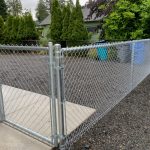
A roofing warranty is a crucial aspect of any roofing project, providing homeowners with peace of mind and protection against unexpected expenses. However, not all roofing warranties are the same, and it’s essential to understand what is covered and what is not before signing a contract with a roofing contractor. Here’s what you need to know about roofing warranties:
1. Types of Roofing Warranties:
Manufacturer’s Warranty:
- This warranty covers defects in the roofing materials themselves, such as premature deterioration, manufacturing defects, or failure to meet performance standards.
- Manufacturer warranties can vary in length, with some covering the materials for 20, 30, or even 50 years.
- Manufacturer warranties typically do not cover the cost of labor for repair or replacement.
Workmanship Warranty:
- This warranty covers the quality of the installation work performed by the roofing contractor.
- Workmanship warranties can vary in length, with some covering the workmanship for 1 year, 5 years, or even the lifetime of the roof.
- Workmanship warranties typically cover the cost of labor for repair or replacement if the installation was faulty.
2. What’s Covered:
Manufacturer’s Warranty:
- Defects in the roofing materials, such as premature deterioration, manufacturing defects, or failure to meet performance standards.
- Coverage may include replacement materials, but not the cost of labor for installation.
Workmanship Warranty:
- Faulty installation work performed by the roofing contractor, such as improper flashing, inadequate ventilation, or poor seam sealing.
- Coverage typically includes the cost of labor for repair or replacement of the affected area.
3. What’s Not Covered:
Manufacturer’s Warranty:
- Damage caused by improper installation, such as leaks, mold, or structural damage.
- Damage caused by extreme weather events, such as hurricanes, tornadoes, or hailstorms.
- Damage caused by neglect, lack of maintenance, or improper care.
Workmanship Warranty:
- Damage caused by extreme weather events, such as hurricanes, tornadoes, or hailstorms.
- Damage caused by neglect, lack of maintenance, or improper care.
- Damage caused by the homeowner or other contractors working on the roof.
4. How to Protect Your Warranty:
Manufacturer’s Warranty:
- Follow the manufacturer’s installation guidelines and recommendations.
- Keep records of all maintenance and repairs performed on the roof.
- Register your warranty with the manufacturer after installation to ensure coverage.
Workmanship Warranty:
- Hire a reputable, experienced roofing contractor with a history of quality workmanship.
- Make sure the roofing contractor is licensed, bonded, and insured.
- Inspect the workmanship carefully after installation and address any issues promptly.
Conclusion:
Understanding the details of your roofing warranties is essential for protecting your investment and ensuring peace of mind. By knowing what is covered and what is not, you can make informed decisions about your roofing project and avoid unexpected expenses down the road. If you have any questions or concerns about your roofing warranties, be sure to discuss them with your roofing contractor before work begins.





